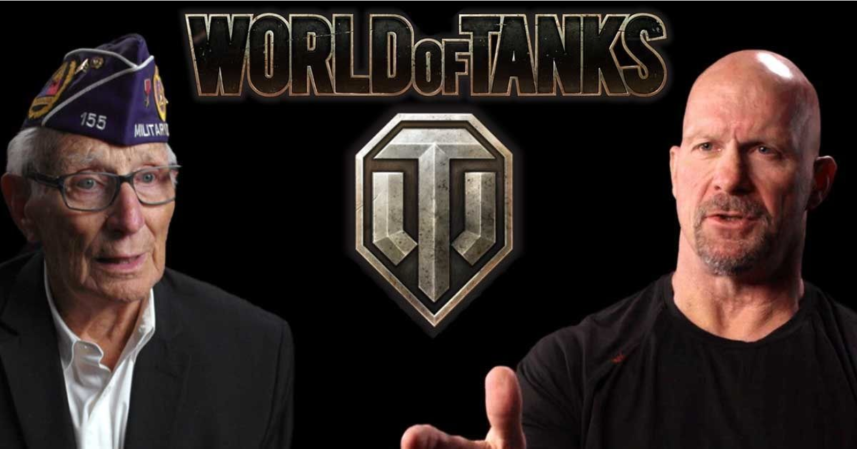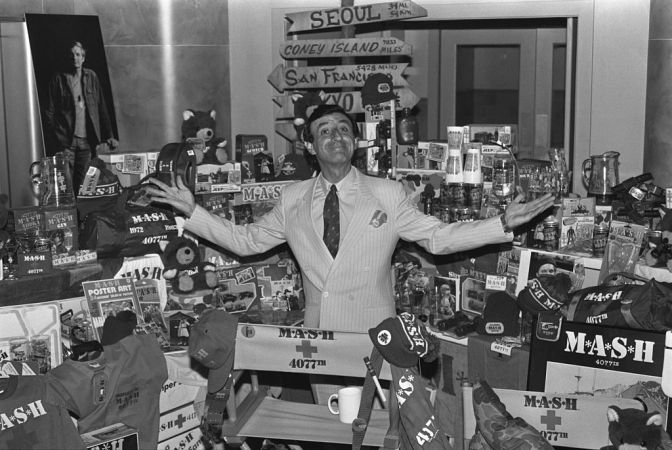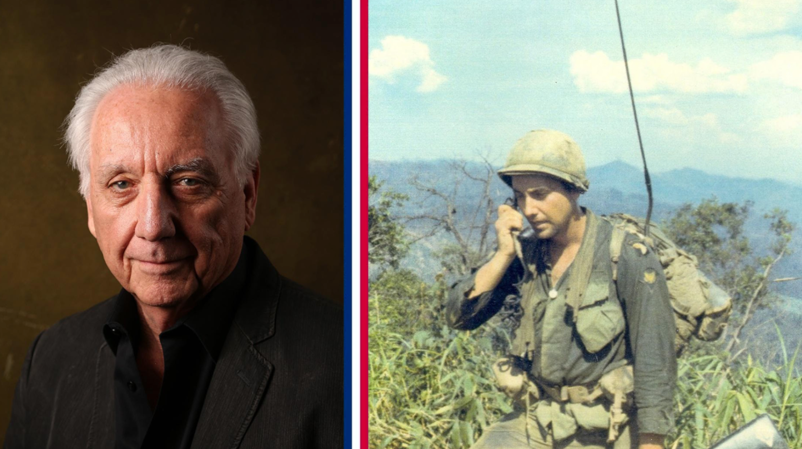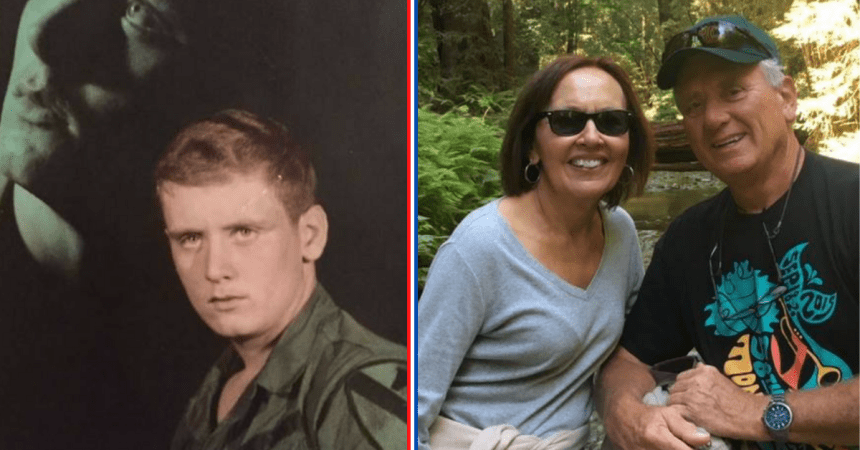Dale Dye is a veteran of the Vietnam war, accomplished actor, author, and entrepreneur, but most of the filmmaking world knows him as Hollywood’s drill sergeant.
After serving in Vietnam as an infantryman and a combat correspondent, Dye served for a number of years before he retired from the Marine Corps and moved to Los Angeles with the idea of bringing more realism to Hollywood films. Despite the door being shut in his face plenty of times, his persistence paid off when Oliver Stone took him on as a military technical advisor for “Platoon.”
That film jumpstarted Dye’s Hollywood career. But before he became the legendary technical advisor who helped shape everything from “Born on the Fourth of July” to “Saving Private Ryan,” Dye, 70, served three tours as a Marine on the ground in Vietnam; a three-time recipient of the Purple Heart and recipient of the Bronze Star (with combat “V”) award for heroism, in fact.
I tried to Google my way to how he earned the Bronze Star award with little results. As far as I know, the story is not known to the general public. So I decided to ask him in an interview at his home, north of Hollywood. This is what he told me.
“I had made it through Hue, in Tet of ’68, and I’d been hit in the hand. Just about blew my thumb off here and I got a piece of shrapnel up under my chin, and I was in the rear. And a unit that I had been traveling with — 2nd Battalion 3rd Marines — they called it rent-a-battalion because it was constantly OPCON/ADCON to various things, and they were really hot, hot grunts. I mean these were good guys. And so I heard that they were going on this operation, and I knew all the guys, you know the 3rd Platoon of Echo Co. was my home. And so, I said I well I’m going. They said ‘ah you’re not ready for field yet.’ I said ‘yeah, yeah, yeah. I’m going.’

So I packed my shit and off I went. And I joined up with Echo Co. 2/3 … and we were involved in a thing called Operation Ford and it was either March, I guess March, of ’68 and the idea was that there had been a bunch of [North Vietnamese Army] that had escaped south of Hue, or been cut off when they were trying to reinforce Hue. They had moved south of Hue along this long spit of sand — I think it was battalion-strength — and they had dug in there according to reconnaissance guys who had been in the area, and they were waiting for ships or boats to come down from North Vietnam and pick them up and evacuate them and get them out of there.
So the idea was that 2nd Battalion, 3rd Marines was going to be sent in and we were going to sweep, I think north to south along the perimeter along that peninsula. And then there were guys who were gonna block in the south — another battalion, I think. And so we started walking — spread out as you usually are — and hadn’t really run into much. We were running through a few [villages] and sweeping them and taking a look, and then we started hitting boobytraps. And these were pretty bad because they were standard frag in a can — fragmentation hand grenade inside a C-ration can tied to a tree, pin-pulled, fishing line attached across the trail — you hit the fishing line, it pulls the frag out, spoon pops and the frag goes. Or we were hitting 105mm Howitzer rounds that were buried. So we got a few guys chewed up pretty bad.

And there was this one guy named Wilson who was walking maybe two or three ahead of me, and he should have known better than to go through this hedgerow. But I guess squad leaders were pushing us on or something like that, [and] Wilson went through the hedgerow and he hit a frag. Frag dropped right below his feet and blew up. So everybody was down and I could see what happened, so I ran up to see if I could help Wilson out. He had multiple frag all over him. It blew his crotch out, blew his chest out, and he had holes all over his face where the shrapnel had come up this way so I got a Corpsman up and we went to work on trying to save him. You had to play him like a flute. We tried to close his chest — and in those days we didn’t have all the medical gear, the QuikClot and all that sort of thing — we just did it with an old radio battery [and] piece of cellophane we got off it and closed his chest.
And we tried to breathe into him, but you had to play him like a piccolo, because the sinuses had shrapnel holes and you had to stick your fingers in there to make sure he didn’t leak air. Anyway, we kept him alive until they got a helicopter to come in and we got him out. He died on the way back to Danang. But they had noticed me go up and see what I could do for this guy.
So we continued to march and then we got hit really, really hard in the flank. And for some reason, I was out on the flank that got hit. And I was walking around by a machine gunner, name of Beebe, Darryl Beebe, Lance Corporal, and he had the M-60. And so they hit us really hard.
The third platoon commander, Lt. “Wild” Bill Tehan, ordered the platoon to pull back to this line of sand dunes where we had some cover from the fire. Beebe and I couldn’t get back. We were just trapped out there. And they started hitting us with grenades and 60mm mortars, and we couldn’t move. We couldn’t get back and we couldn’t go forward. And Beebe’s [assistant] gunner got killed, and he had ammo, maybe 20 meters up to the side. And I crawled over and got all his ammo and then crawled back to Beebe and started loading the gun. Off we went, and we just ripped them up. We tore into these bunkers that were taking us under fire. And Hell, I even pulled out my pistol and went to work. I mean we fired everything we had, threw every grenade we had.

We must have hurt them. I know we hurt them because I killed two or three that I saw get up and go and I shot at them and down they went. So I guess we suppressed enough fire where we could pull back and we pulled back. And at that point, I think it was mortars or 81s or the 105 battery that was supporting us, I don’t remember what. Anyway, they hit the bunker complex. And Tehan went up and he looked and we killed a bunch of them. The machine gun, the single machine gun had just killed a bunch of them. And so I guess they marked me down as number two guy, having done two good things.
And then we got hit again, I think it was the next day. We had moved on, and we got hit again, and a corpsman and a couple of other people got hit. And I went up and pulled them out of the line of fire, and treated the corpsman. It was a very embarrassing thing because the corpsman was a guy by the name of Doc Fred Geise and I knew him real well. But he’d taken one in through the chest and I saw him go down, so I dropped my pack and went running up to him and they were firing all over me and one NVA that I didn’t even see, dumped a frag that hit right behind me. And boom it went off, and the next thing I knew, I was airborne. And I could feel stuff running down my legs. And I said, ‘ah, shit, I’m hurt.’ But I didn’t feel anything in particular, just dazed, you know the bell rung. And it was my canteen. That frag had blown out the bottom of both of my canteens, so I had water all over me.
Anyway, so I got up to Fred, and he had one through and through. And so, he was working on a guy who had taken one in the upper arm, broke the bone and I fixed him up the best I could then I got to Geise but there wasn’t much I could do. I stuffed the gauze in the entry wound, and wrapped it up the best I could — I was just winging it — what I could remember from first aid.
And he carried morphine syrettes. They look like those little tubes of toothpaste you get in a travel kit. And they have a plastic — they look like a little tube of Colgate — cover on the needle. And the needle has a loop in it, so you bite or pull the plastic off and break the seal with that little loop, throw that away, then you hit them in a muscle and inject that amount of morphine. I knew that.

But there was fire coming at me. I was working literally on my belly because the crap was just cutting right through us. And rounds were hitting so close they were just blowing dirt all over us. Mud and water and all that sort of thing. But I tried to stay focused and get Doc Geise injected with morphine.
Well I pulled the plastic off the morphine syrette and I hit him three or four times in the thigh, you know trying to

squeeze this morphine in. It wouldn’t go. And I couldn’t figure out — you know the poor guy’s thigh is worse than the gunshot wound — like a pin cushion. And I finally figured it out, ‘oh shit, I forgot to break the seal,’ so I break the seal and finally get morphine in him. But oh, God.
He was saying, ‘Dye, you asshole, you idiot,’ you know. And I’m just, ‘sorry, Doc.’
So anyway, we had a bad night that night because they had moved out of their fortified positions and they were trying to break through us. And we had a pretty serious fight that night.
I think that was the first and only time I burned through every round of ammunition I had and then also borrowed a bunch of ammunition. And in fact, we had a bunch of medevacs that had been taken out on amtracs, and the company gunny had kept their weapons. And so we were over there scavenging all night, getting loaded magazines. We only had the 20-round magazines at that point for the M-16, and a lot of 16s were going down. You know, they were not the best piece of gear we ever had.
So anyway, then we went on ahead and we had another three or four days with four or five sharp fights but nothing as spectacular. And we got to the rear, and I said well okay, I’ve got to go here. I’m going to go somewhere where I can go through my notebooks, and I had a little story about the corpsman, and I had a little story about this guy, and a little story about Beebe and the machine gun, and so on and I realized, a lot of that involved me, which I wasn’t real happy about, you know, mentioning my part in it.

But Lt. Tehan and the company commander really decided that I had done something spectacular, or out of the ordinary, let me put it that way.
And so they got Simmons and Beebe and Lt. Tehan and three or four other guys to write a statement that said this is what Sgt. Dye did. And the next thing I knew, my captain called me in and said ‘I hope you got a clean uniform and some boots that aren’t completely white,’ and I said, ‘oh no sir, I don’t.’ He said ‘well we’re getting you some because the general is going to pin a Bronze Star on you and that’s the first thing I ever heard about it. First time I ever heard that, you know. But that’s the story.”

Here is the full citation for the award, which Dye received on Sep. 9, 1968:
For heroic achievement in connection with operations against insurgent communist (Viet Cong) forces in the Republic of Vietnam while serving as a Combat Correspondent with the Informational Services Office, First Marine Division. On 14 March 1968, during Operation Ford, Sergeant Dye was attached to Company E, Second Battalion, Third Marines when an enemy explosive device was detonated, seriously wounding a Marine. Reacting instantly, he moved forward through the hazardous area and skillfully administered mouth-to-mouth resuscitation to the injured man. A short time later, the unit came under intense hostile fire which wounded two Marines. Disregarding his own safety, Sergeant Dye fearlessly ran across the fire-swept terrain and rendered first aid to the injured men while assisting them to covered positions.
On 18 March 1968, Sergeant Dye again boldly exposed himself to intense enemy fire as he maneuvered forward to replace an assistant machine-gunner who had been wounded. Undaunted by the hostile fire impacting around him, he skillfully assisted in delivering a heavy volume of effective fire upon the enemy emplacements. Ignoring his painful injury, he steadfastly refused medical treatment, continuing to assist the machine gunner throughout the night.
His heroic and timely actions were an inspiration to all who observed him and contributed significantly to the accomplishment of his unit’s mission. Sergeant Dye’s courage, sincere concern for the welfare of his comrades and steadfast devotion to duty in the face of great personal danger were in keeping with the highest traditions of the Marine Corps and of the United States Naval Service.
Sergeant Dye is authorized to wear the Combat “V”.
For The President,
H.W. Buse, Jr.
Lieutenant General, U.S. Marine Corps
Commanding General, Fleet Marine Force, Pacific


















